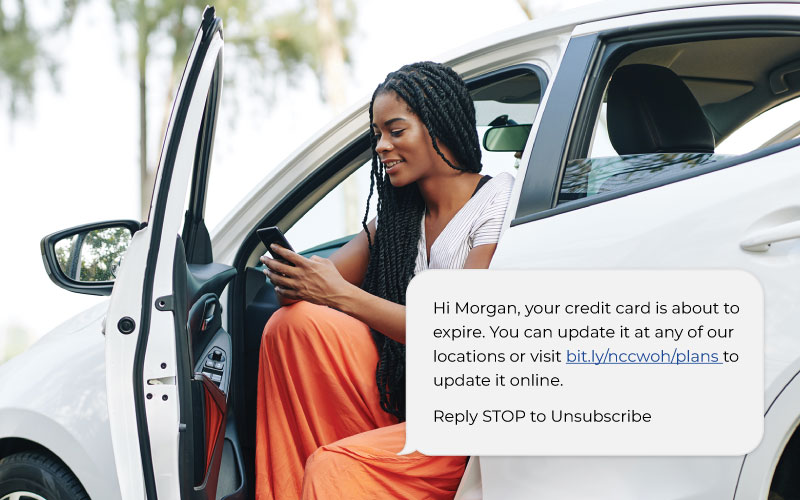July 21, 2023
One of the biggest deterents to car wash operators considering a point-of-sale switch is data migration and the fear of losing data on members' plans, prepaids and more. In this webinar, two of the people closest to our wash management platform Patheon® discuss how to make such a data migration as seamless as possible.
What is data migration?
At a basic level, data migration means taking information from one system and moving it to another. In DRB’s terminology, data migration is moving customer plan data, which includes recurring customer monthly plan data as well as non-recurring, time-based plan data. In some cases, it also involves prepaid data, such as gift cards and units.
DRB stands as a leader in point-of-sale solutions, particularly excelling in data migration. Initially, we managed only a handful of migrations annually. This year, however, we’ve surpassed 500. To achieve this, we’ve established a dedicated team solely focused on data migrations. This team possesses comprehensive expertise in processes across various point-of-sale providers.
9 Ways to Get Car Wash POS Data Migration Right
With that expertise, we share the following tips on how you can help make your migration successful.
- Understand the scope of data migration. Make sure you understand the starting data and the best way to present it going forward.
- Include credit card data in migration. Most modern credit card processors use tokenized systems, allowing the secure transfer of credit card data. Ensure your migration plan includes this step to avoid starting over with new credit card information.
- Select a provider that can work with multiple payment processors. For example, DRB can work with different payment processing systems, even those not integrated with their system, to facilitate the data migration. This flexibility ensures a smoother transition for the car wash owners and customers alike.
- Prepare and commit time for migration. Your participation is crucial. Assign a project leader or champion from your team to be the main point of contact. This person will handle communications and ensure all necessary steps are completed.
- Be responsive and communicative. Delays in communication can extend the migration timeline. Stay responsive to emails and calls, and ensure all required forms and agreements are signed promptly.
- Avoid major changes before migration. Stabilize your data before migration by avoiding significant changes to your plans. This helps ensure a smoother transition without unexpected issues.
- Consolidate and simplify plans. Review and simplify your plans before migration. Consolidate similar plans to reduce complexity and make the new system easier to manage.
- Test thoroughly post-migration. After migration, have additional staff on hand to test all systems, including kiosks and cashier stations. Ensure everything is functional and address any issues immediately.
- Provide customer support post-migration. For a week or two after migration, station staff at pay stations to assist customers with any questions or issues. This helps ensure a smooth transition for your customers, as well.
By following these steps, you can ensure a successful data migration to Patheon, minimizing disruptions and maximizing efficiency.
CTA: Interested in learning more about Patheon? Request a demo today!
FAQ Summary
Q: Does we have to be using one of the processors that DRB uses to bring that data over?
A: No. We have ways to work with other processors to extract the data and move it to one of the DRB approved payment processors.
Q: What kind of preparation and time commitment is required on our part to ensure that the switch to Patheon is successful?
A: The time commitment can vary, but we do need customer participation in this process. There are certain things we can't do, such as signing contracts with processors to facilitate the data transfer and any agreements. The customer must be involved in communication between all parties.
Again, avoiding large configuration changes to your plans leading up to the migration helps save time. Because we're trying to move data for one POS to another, we want to make sure things are as stabilized as possible.
Q: How knowledgeable does our project leader need to be to make sure this migration is successful?
A: They don't need to be an IT expert, by any means. We're simply looking for somebody who knows the business and its operations.
Q: What about reporting or education? How would a customer know who's in a conversion? What's going on during this process?
Patheon's dashboards will give you the total number of plans migrated per site and any churn rate on those migrated plans. The technology allows you to really drill down into your data and get a much better understanding of your customers.
Two people from DRB that will be assigned to the data migration project. One is more administration-oriented while the other is entrenched in the deep technical process.
Q: If I have multiple sites, how does the data migration work?
A: It all depends on your project plan. DRB has done conversions where a customer wants to convert one site and then wait a couple weeks before converting the next site. That's possible. There are other cases where the customer wants to try to flip a switch and convert all sites at once. We can certainly work with that as well. It just depends on the customer, what the ask is and what's best in those cases.
Q: Where does the data migration connect or fall into place when you look at the hardware?
A: With Patheon, it's kind of outside of that process because it's a hybrid-cloud solution, so a good portion of the data processing exists in the cloud. We can do the import before the site is live on Patheon, and if we come from another point-of-sale system, we're able to delay that data taking effect until the date at which we expect to go live on Patheon.
Q: If I decide to move to Patheon and I don't want to go through the process of migrating my data, what does that mean?
A: There are a couple options, and it depends on what data that you want to omit from the migration. We've seen some customers decide that they do not want to go with the credit card portion of the data transfer but they do want to go with the customer plan part. In that case, we can extract the customer data out of the old point-of-sale system and import it into Patheon. From there, because there's no card data available, Patheon will ask customers to update their card as they come in . We're able to select certain dates for Patheon to start recharging. We have a little bit of time to allow customers to update their card on file before we start trying to attempt those cards, just to give more time for a more thorough and increased capture rate.
Q: If I have recharge plans that have members in them but I want to simplify what my wash offers, can DRB consolidate members during the migration?
A: Absolutely, yes.
Q: Are there any performance or downtime constraints with data migration? Do I have to take the point-of-sale down or my wash services down to make this conversion work, and will we see any performance issues if I don't?
A: It depends on the source point-of-sale. In some cases, we're able to grab a backup that was made prior and use that data. In other cases, we do need to shut the original point-of-sale system down to essentially enable the conversion over to the new POS. If there is downtime, we try to keep it to no more than four hours, and we do start early in the morning to try to get that in before the site really starts running for the day.
.jpg?width=1500&resizemode=force)




